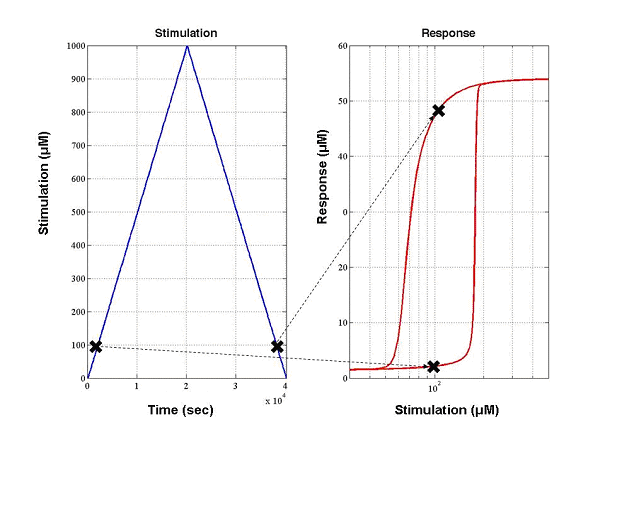Bologna University/Hysteresis
From 2007.igem.org
(Difference between revisions)
| Line 1: | Line 1: | ||
Hysteresis implies that the state of the system is always dependent on what happened before the moment we are observing. So for example, as you can see in Figure 3, in a system which input (stimulation) and output (response) measure concentrations, for identical values of the stimulation (for example 100μM), the response can have different values (3μM and 48μM). | Hysteresis implies that the state of the system is always dependent on what happened before the moment we are observing. So for example, as you can see in Figure 3, in a system which input (stimulation) and output (response) measure concentrations, for identical values of the stimulation (for example 100μM), the response can have different values (3μM and 48μM). | ||
| - | + | [[Image:Imagin1.jpg]] | |
[[Bologna | Back]] | [[Bologna | Back]] | ||
Revision as of 14:56, 25 October 2007
Hysteresis implies that the state of the system is always dependent on what happened before the moment we are observing. So for example, as you can see in Figure 3, in a system which input (stimulation) and output (response) measure concentrations, for identical values of the stimulation (for example 100μM), the response can have different values (3μM and 48μM).
